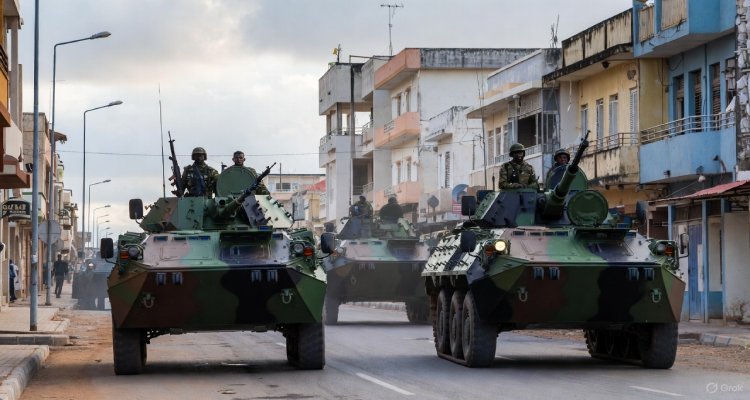Crossings in Focus: 10 Dead as Train Hits Double-Decker Bus
A freight train collided with a double-decker bus in central Mexico, killing 10 and injuring 61+. The crash spotlights rail-crossing safety and infrastructure gaps.
A Split Second, Lifelong Consequences
A routine highway trip turned catastrophic in central Mexico when a freight train slammed into a double-decker passenger bus, killing ten people and injuring at least sixty-one. The violence of the impact crushed the bus’s upper deck and left first responders navigating mangled metal as they ferried survivors to nearby hospitals. Beyond the immediate loss, the collision has revived urgent questions about safety at rail crossings and the pressure points in Mexico’s road and rail systems.
What We Know So Far
Local authorities say the crash occurred in an industrial stretch of highway linking Atlacomulco roughly 115 kilometers (71 miles) northwest of Mexico City with Maravatío in neighboring Michoacán. Images from the scene show the top deck sheared and the frame deeply buckled, a stark indicator of the force involved.
Canadian Pacific Kansas City de México (CPKC), the railway operator, stated the bus attempted to pass in front of a moving train before the collision. The company offered condolences to the victims’ families and reiterated a public plea for drivers to obey signage and stop orders at rail crossings. The bus operator, Herradura de Plata, did not immediately respond to requests for comment.
Officials from the State of Mexico’s attorney general’s office confirmed the death toll: seven women and three men. Among the injured, some remain in serious condition, while others were treated and released. Investigators are working to reconstruct the sequence of events and determine what, if anything, failed at the intersection of human judgment, road rules, and infrastructure.
A Country on the Move Mostly by Bus
Buses are the backbone of intercity travel in Mexico. While freight rail is ubiquitous, passenger rail options are limited, which places outsized demand on highways and long-haul buses. This structural reality shapes risk: more buses on busy corridors, frequent intersections with rail lines, and heavy industrial traffic create conditions where a single lapse human or mechanical can turn fatal.
The pattern is not new. Deadly bus crashes recur across Latin America, where regional topography, long distances, and economic realities make buses essential. Mexico’s most recent federal data on collisions counted 12,099 crashes on federal highways in 2023, with nearly 1,900 deaths and more than 6,400 injuries and economic losses exceeding $100 million. Earlier this year, a separate bus disaster in southern Mexico killed more than 40 people after a passenger coach struck a trailer truck and caught fire. Each incident carries different facts but echoes the same underlying vulnerabilities.
Inside the Crash Zone: Response and Triage
First responders cordoned off the area quickly, navigating twisted steel, shattered glass, and fuel odors to reach survivors. In mass-casualty events like this, the first hour often called the “golden hour” can determine outcomes for patients with internal injuries, traumatic brain injuries, or severe bleeding. Local hospitals initiated surge protocols to accommodate the influx, prioritizing the most critical cases.
Authorities have not yet provided a detailed breakdown of injury types, but the visual evidence from the scene most notably damage concentrated on the upper deck suggests passengers seated on top took the brunt of the impact. That aligns with well-documented dynamics in double-deck collisions, where the higher center of gravity and exposure can amplify risk when a vehicle meets a large, fast-moving mass like a train.
What the Companies Are (and Aren’t) Saying
CPKC’s initial message focused on condolences and compliance: respect the signals, obey stop orders, do not attempt to outrun a train. Rail operators routinely emphasize that trains need far more distance to stop than road vehicles and that visual and auditory warnings at crossings are only as effective as the human behaviors around them. CPKC did not publicly speculate beyond its core claim that the bus tried to cross in front of an oncoming train.
Herradura de Plata, the bus operator, had no immediate public statement. In the aftermath of severe crashes, transport companies typically coordinate with authorities, review internal data (including GPS traces, driver logs, and maintenance records), and, if available, analyze video from onboard systems to understand what happened second-by-second.
The Investigation: Questions on the Table
While the official inquiry is ongoing, investigators will likely examine a familiar set of factors:
-
Human Factors: Driver decision-making, fatigue, distraction, adherence to signals, and line-of-sight limitations.
-
Crossing Infrastructure: Visibility of signage, functioning of warning lights and barriers (if present), and maintenance records.
-
Train Operations: Speed relative to posted limits, horn use, braking distance, and rail signaling.
-
Vehicle Condition: Bus maintenance status, braking performance, and door function for evacuation.
A key task is reconstructing timing: when warning systems activated, how fast the train was traveling, and how long the bus occupied the crossing. Even fractions of a second matter and can determine legal responsibility and policy changes.
Why Rail Crossings Remain a Persistent Risk
Rail crossings are engineered to be redundant and obvious signs, lights, bells, gates yet they remain among the most unforgiving places on any road network. Trains cannot swerve, and their stopping distance can stretch to kilometers. On multilane or high-speed roadways, a driver misjudging a train’s distance or speed has almost no margin for error.
The risk intensifies where crossings intersect with heavy-haul routes, industrial traffic, or busy coach lines. Add nighttime visibility issues, weather, or driver fatigue, and the odds tilt further. Safety experts often highlight three low-tech pillars that save lives: clear sightlines, conservative driver behavior, and unambiguous signaling. When any of these degrade even briefly the consequences can be lethal.
Policy Context: The Push for Passenger Rail
The government led by President Claudia Sheinbaum has stated an ambition to significantly expand passenger rail links, especially across northern and central regions. While freight rail remains vital to Mexico’s economy, broader passenger rail could reduce reliance on buses along congested corridors, diversify travel options, and, over time, ease pressure on highway networks. That said, infrastructure projects take years to plan and build. In the near term, most intercity trips will still happen on buses keeping the spotlight on immediate, low-cost safety measures.
What Safety Advocates Emphasize Now
Road-safety advocates and transportation planners generally converge on several practical steps that tend to yield outsized safety gains at crossings:
-
Enforcement and Education: Consistent penalties for violations, plus recurring public campaigns reminding drivers to stop, look, and listen.
-
Engineering Upgrades: Where feasible, install or modernize gates, add rumble strips and advance warning signs, improve lighting, and trim vegetation to widen sightlines.
-
Data-Driven Fixes: Use crash histories and near-miss reports to prioritize the most dangerous crossings for upgrades.
-
Fleet Practices: Coach operators can reinforce training on crossing protocols, mandate reduced speeds near tracks, and audit adherence using telematics.
These steps do not require a national rail overhaul. They are incremental, relatively affordable, and proven in many jurisdictions to cut fatal incidents at grade crossings.
The Human Toll Behind the Numbers
Statistics sketch the scale of the problem, but they cannot capture the intimate ruptures these crashes cause families losing breadwinners, children losing parents, communities losing neighbors. Survivors face long recoveries and, in some cases, permanent disabilities. First responders and medical staff carry the psychological weight of mass-casualty care, returning to the next call with memories they cannot easily set aside.
Public attention often fades after headlines move on. For the families, however, the timeline stretches forward through investigations, insurance processes, and grief that unfolds in unpredictable waves.
Implications and What Comes Next
In the weeks ahead, expect authorities to release more granular findings: vehicle data, timelines, and any determinations of fault. If the investigation identifies systemic deficiencies signage, barriers, or maintenance local and state agencies may order corrective work at the site and similar crossings nearby. If driver behavior is central, enforcement campaigns and targeted education often follow.
Longer term, momentum behind passenger rail expansion could gather fresh political energy, especially if policymakers link rail growth with road-safety benefits. But the most immediate life-saving gains will likely come from a familiar playbook: clearer crossings, stricter compliance, and relentless attention to the basics of defensive driving near tracks.
Conclusion-A Test of Will at the Edge of Steel
Trains and highways will always intersect in a country stitched together by both. The question is whether those intersections are managed with enough redundancy, clarity, and respect to prevent tragedy. Ten lives lost near Atlacomulco underscore that safety at rail crossings is not just about equipment or rules; it’s about habits, vigilance, and the collective will to enforce what we already know works.
(Disclaimer: This article is based on information provided by local authorities and official company statements. Figures, attributions, and details reflect what was available at the time of publication and may be updated as investigations proceed.)
Also Read: Supreme Court Greenlights Trump’s Immigration Raids in California











